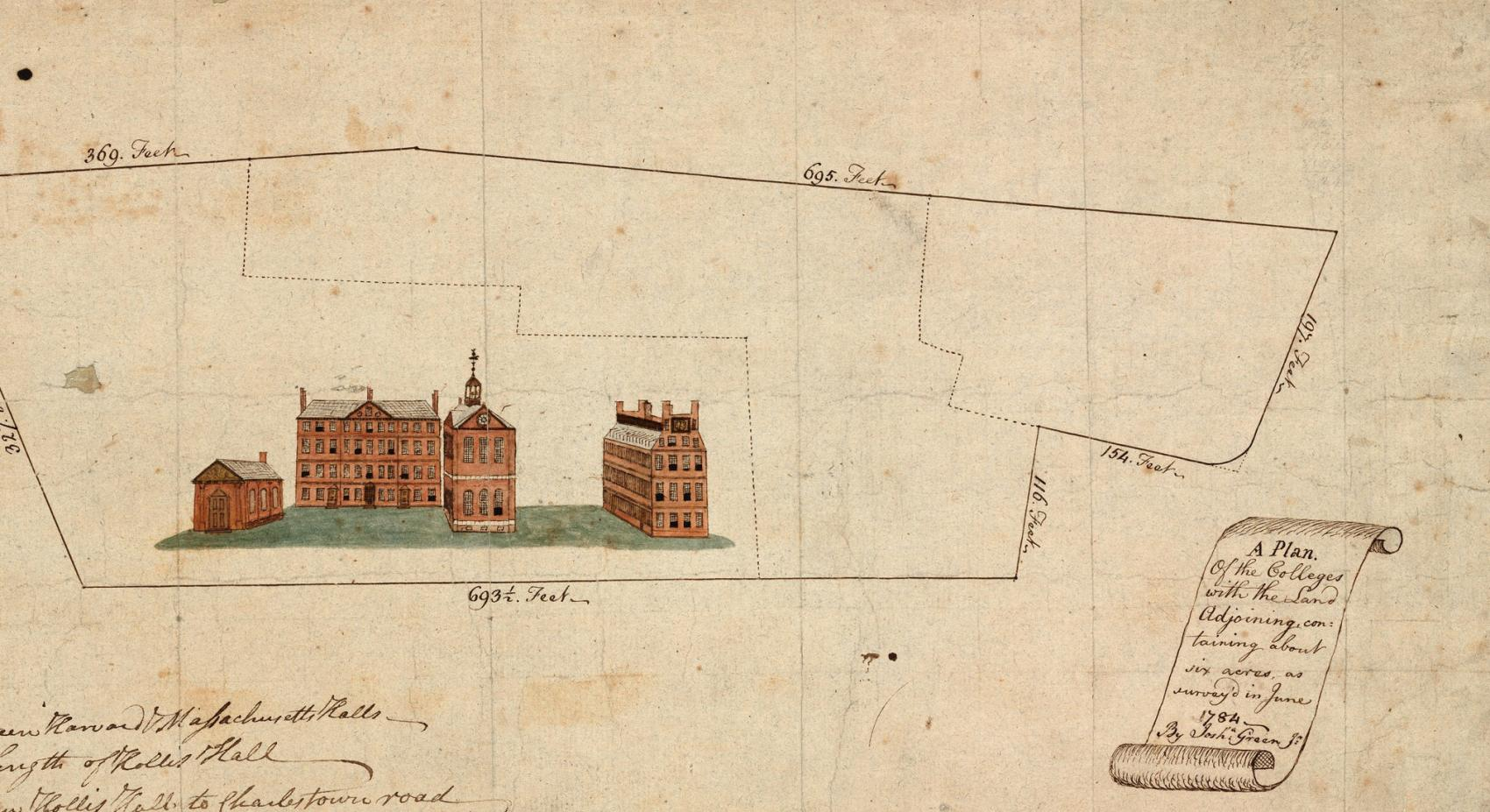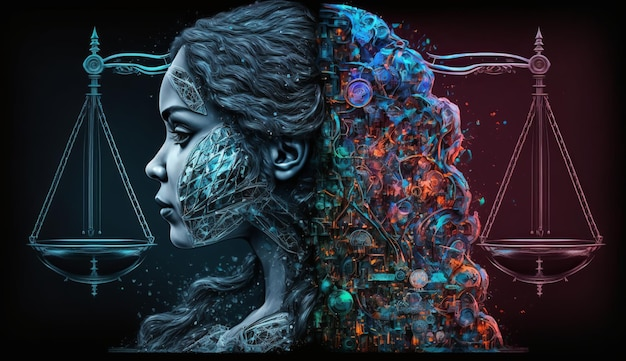The Harvard University Archives serves as a treasure trove of history, preserving a vast collection of documents that chronicle the legacy of one of the most prestigious institutions in the world. Among the fascinating artifacts housed within these archives are notable letters such as a heartfelt note from President John F. Kennedy to his Harvard classmates and a poignant correspondence from W.E.B. Du Bois discussing critical issues of race relations in America. The current Harvard archives exhibit, “Archives Inside Out,” showcases these historical items, allowing the public to connect with the rich tapestry of Harvard’s past. Through curated selections, visitors can delve into archival research at Harvard, exploring how individual stories contribute to a broader narrative of the nation. This commitment to making history accessible highlights the importance of the University Archives in understanding both local and national identity.
Within the storied halls of Harvard, the institution’s archival collections reveal an extensive repository of unique materials that reflect the evolution of American history and academia. The latest exhibit, titled “Archives Inside Out,” invites exploration of invaluable pieces like letters from iconic figures and documents that illustrate the diverse narratives shaping the University. By engaging with these collections—ranging from presidential correspondence to early 20th-century discussions on social issues—visitors can appreciate the richness of archival material and its role in advancing scholarly research. The archives act as a bridge between the present and the past, showcasing not only Harvard’s institutional legacy but also the wider societal transformations that occurred alongside it. As the archives continue to evolve, they embody the stories and memories crucial to understanding both Harvard and the American experience.
Exploring Harvard University Archives: A Treasure Trove of Historical Finds
The Harvard University Archives serve as a remarkable repository of historical items that provide an intimate glimpse into the legacy of both the University and the country. From handwritten letters to photographs, each piece tells a story that contributes to the rich tapestry of American history. For instance, archival gems like the letter from John F. Kennedy to the Class of 1940 offer unique insights into the thoughts and experiences of one of America’s most iconic presidents during his formative years. Such items not only preserve valuable historical perspectives but also reflect how archival research at Harvard has evolved over time to include diverse narratives that shape our understanding of the past.
Moreover, the insightful selections made by archivists highlight the significance of community engagement in preserving history. Exhibits like “Archives Inside Out” encourage the public to appreciate the meticulous work behind these collections. By showcasing significant artifacts such as the 1905 letter from W.E.B. Du Bois, viewers can explore critical discussions around race relations that remain relevant today. This blending of archival research and public history ultimately strives to make the extensive collections at Harvard more accessible and relatable, allowing a broader audience to engage with and appreciate the intricate stories encapsulated within these artifacts.
The ‘Inside Out’ Exhibit: A Celebrated Reflection of Harvard’s Rich Legacy
The ‘Inside Out’ exhibit at Harvard offers an enlightening showcase of selected artifacts that highlight the University’s vibrant history and its connection to wider societal narratives. Curated by the dedicated team at Harvard University Archives, this exhibit was designed to demystify the archival process, making it easier for the public to understand how historical items are painstakingly discerned and preserved. Featured items like the hand-drawn perpetual calendar from the late 19th century demonstrate the innovative spirit of past Harvard leadership, while the poignant letters and correspondence from notable figures such as W.E.B. Du Bois and Seamus Heaney serve as a testament to the intellectual and cultural significance of the University throughout the years.
As visitors navigate the exhibit, they are presented with a compelling array of stories that connect the University’s past with contemporary issues. For example, the display of Harvard’s response to the COVID-19 pandemic, as documented by ‘The Harvard Crimson,’ highlights how an academic institution adapts and responds to global crises. Each item within the exhibit transcends its physical form, presenting unique narratives that contribute to an ongoing dialogue about education, society, and the evolving role of archives in capturing our collective memory.
The Power of Archival Research: Bridging Past and Present
Archival research at Harvard transforms how we perceive historical documents by not just celebrating the artifacts themselves but also engaging with their narratives. These records include letters, photographs, and personal accounts, such as Ragan Henry’s correspondence that highlights the complexities of identity and friendship during a turbulent era for racial dynamics in America. Such findings illuminate personal experiences that resonate with current societal issues, allowing historians and researchers to draw parallels between past and present. By analyzing these documents, we gain insight into the motivations and challenges faced by individuals in the broader context of American history.
Furthermore, the archival process incorporates modern technology to enhance accessibility to these historical treasures. Digitization efforts ensure that a diverse range of voices, like those of Harvard pacifists during World War II, are preserved and made accessible for future generations. As the archives continue to evolve, they also reflect on our responsibilities to document and honor a pluralistic society. This focus on inclusivity in archival research emphasizes the importance of preserving varied perspectives that enrich our understanding of history’s complexity.
Significant Letters in Harvard’s Archival Collections
Among the esteemed items within the Harvard University Archives are remarkable letters that provide rich historical insight. The handwritten notes penned by influential figures, such as John F. Kennedy and W.E.B. Du Bois, have become crucial for researchers delving into the nuanced discussions around America’s political and social landscapes. The letter from Kennedy to his classmates captures a moment in time that underscores the camaraderie and aspirations of young leaders post-World War II, while Du Bois’s correspondence serves as an essential resource for understanding early 20th-century race relations and intellectual discourse.
These letters not only serve as historical documents but also as personal narratives that breathe life into the broader historical context. Through archival research, these letters become lenses through which we can examine the complexities of race, identity, and individual experiences against the backdrop of larger societal changes. The meticulous preservation of these letters underscores their significance as both personal artifacts and vital pieces of America’s historical puzzle.
Women in Harvard’s Archives: Celebrating Invisible Labor
The contributions of women, often labeled as “computers” in the early 20th century, are fascinatingly documented in the Harvard University Archives. A notable photograph depicting a group of women at the Harvard College Observatory is a poignant reminder of the vital yet often overlooked roles women played in scientific endeavors. These unseen contributors not only advanced astrological studies but also signaled a shift towards greater inclusivity within academia that echoes into the present. As archivists, recognizing and highlighting such contributions helps rewrite narratives that have previously marginalized women’s historical roles.
By celebrating these figures through archival collections, we begin to recognize the continuum of invisible labor that persists in various forms today. The reliance on women’s expertise at the observatory shows how critical interdisciplinary collaboration was then and continues to be now. By making these stories accessible through exhibits and archival research, we foster a greater understanding of women’s contributions in both academia and society, empowering future generations to recognize and value diverse contributions within historical narratives.
The Harvard Archives Exhibit: A Community Celebration
The community-centered approach of the ‘Inside Out’ exhibit not only showcases significant artifacts but also revolves around the contributions of archivists and staff. Each selected piece represents individual archivists’ passions, bringing their personal enthusiasm for historical items to the forefront. This collaborative effort emphasizes the importance of community engagement in historical preservation, making the archives more relatable and accessible to the public. Every item tells a unique story that feeds into Harvard’s larger narrative, reinforcing a sense of shared heritage among both the University and the surrounding community.
Moreover, the exhibit serves as a platform for archivists to communicate the value of their work to a broader audience. By inviting staff to share their favorite finds, the exhibit highlights the diverse roles within the archives and the richness of the collections at Harvard. This collective effort not only demystifies the work of archivists but also encourages the public to appreciate the significance of archival research. Such initiatives help foster a stronger connection between the University and its community, ultimately enriching the cultural landscape and historical understanding shared by all.
Digitization Efforts at Harvard Archives: Preserving History for the Future
The digitization initiatives at the Harvard University Archives reflect a commitment to preserving history for future generations. As the world increasingly shifts towards digital formats, Harvard’s archival research teams are diligently working to ensure that key artifacts and documents are accessible online. Projects like the digitization of personal letters and documents allow broader access to diverse narratives and preserve them in a format that withstands the test of time. This technological advancement not only safeguards the physical condition of historical items but also enhances their discoverability for students and researchers worldwide.
In addition to ensuring that these records are preserved, digitization allows for the incorporation of rich metadata that enhances users’ research experience. By using keyword searches, scholars can readily access specific documents, such as the poignant letters of Ragan Henry or the insights shared by Harvard pacifists during World War II. This ease of access can lead to groundbreaking research and new perspectives when studying the intersections of race, politics, and the societal challenges that have shaped America over time.
The Role of Archival Exhibits in Educational Contexts
Exhibits like ‘Archives Inside Out’ play a crucial role in education by providing tangible connections to historical events and figures. Such displays not only encourage curiosity among visitors but also allow students and scholars to engage with primary source documents that highlight specific themes within their studies. By showcasing unique items from the Harvard University Archives, educators can craft immersive learning experiences that inspire new generations to explore the richness of history in a hands-on manner. The flexibility of these exhibits to address various topics makes them invaluable resources for educators.
Moreover, archival exhibits serve as a living classroom where historical context can be clarified and examined alongside contemporaneous debates. By including diverse perspectives and experiences showcased in letters and photographs, such programming facilitates robust discussions around history’s impact on present-day culture. Ultimately, through archiving and exhibitions, institutions like Harvard bridge the gaps between past and present, reinforcing the importance of historical literacy in navigating contemporary societal issues.
The Future of Harvard Archives: Embracing Equity and Diversity
The future of the Harvard University Archives is being shaped by a strong focus on equity, diversity, and inclusion in the collections being curated. As archivists aim to represent all aspects of the Harvard experience, efforts to include under-represented voices are increasingly prioritized. Projects related to marginalized communities and individuals, such as those highlighted in the digitization efforts of personal letters, ensure that future historians will have access to a more balanced view of history—a narrative that truly reflects the complexity of our society.
In addition to preserving a diverse range of materials, the archives are reexamining traditional practices, ensuring that new acquisitions represent a wider spectrum of experiences and perspectives. This inclusive approach not only enriches the archival collections at Harvard but also invites collaborative storytelling that can influence scholarship across various disciplines. Such commitment to preserving diverse narratives strengthens the role of the archives as a vital resource for understanding the multifaceted nature of American history.
Frequently Asked Questions
What kinds of historical items can be found in the Harvard University Archives?
The Harvard University Archives houses a rich collection of historical items, including letters from prominent figures like John F. Kennedy and W.E.B. Du Bois. Items such as photographs from significant events and unique artifacts contribute to understanding Harvard’s institutional and community history.
How can I conduct archival research at Harvard University Archives?
To conduct archival research at the Harvard University Archives, researchers can visit in person or access the Archives’ digital collections online. The staff is available to assist with finding relevant historical items, such as letters, photographs, and documents that illuminate Harvard’s multifaceted past.
Is there any exhibit related to the Harvard archives currently on display?
Yes, the ‘Archives Inside Out’ exhibit at Harvard features a selection of unique artifacts from the Harvard University Archives, showcasing items like the John F. Kennedy letter and the W.E.B. Du Bois letter. This exhibit runs through April and highlights the importance of archival work in preserving history.
How do items from Harvard’s past enter the Harvard University Archives?
Items enter the Harvard University Archives through donations, bequests, and acquisitions, which are curated by the archivists. The process includes assessing the historical significance of items, like letters from influential individuals, and cataloging them for public access.
What is the significance of the John F. Kennedy letter housed in the Harvard University Archives?
The John F. Kennedy letter, written to his Harvard College classmates, is significant as it provides a personal view of the former president’s character and experiences. It reflects the intersection of Harvard’s history with broader American narratives.
How did W.E.B. Du Bois contribute to the Harvard University Archives?
W.E.B. Du Bois contributed to the Harvard University Archives through his correspondence, including a notable letter to his mentor, Albert Bushnell Hart. This letter discusses crucial issues regarding race relations and is part of the archives’ comprehensive collection documenting significant historical dialogues.
What types of items are featured in the exhibit at Harvard University Archives?
The exhibit at Harvard University Archives features a variety of items, including handwritten letters, photographs, and documents reflecting Harvard’s historical moments. Highlights include artifacts such as the John F. Kennedy letter and sketches from the Harvard Lampoon, illustrating diverse aspects of Harvard’s cultural and educational legacy.
Who curates the collections in Harvard University Archives?
The collections in the Harvard University Archives are curated by a dedicated team of archivists and staff. Their expertise allows them to select and manage historical items, ensuring that important documents like the W.E.B. Du Bois letter and various photographs are preserved and accessible.
What role do digitized collections play in the Harvard University Archives?
Digitized collections in the Harvard University Archives enhance accessibility to historical materials for researchers and the public. By digitizing items such as personal letters and significant documents, the archives ensure that important information, like those regarding the COVID-19 pandemic, can be preserved and easily accessed online.
Can I view the Harvard archives exhibit online?
While the ‘Archives Inside Out’ exhibit at Harvard is primarily an in-person display, the Harvard University Archives regularly updates its online collections, allowing users to view digitized items, including those showcased in the exhibit.
| Item | Description | Archivist |
|---|---|---|
| Letter from John F. Kennedy to Class of 1940 | A light-hearted letter providing insights into JFK’s personality. | Pam Hopkins, Head of University Archives Reference Services |
| Photograph of Women Computers, 1900 | Depicts women cataloging stars, showcasing their historical roles. | Alison Macdonald, Records Manager/Archivist for Operations |
| Letter from W.E.B. Du Bois to Albert Bushnell Hart, 1905 | Illustrates the historical dialogue on race relations in America. | Erin Clauss, Lead Processing Archivist |
| Perpetual Calendar, circa 1885 | Thomas Hill’s invention demonstrating scientific curiosity beyond education. | Dominic P. Grandinetti, Processing Archivist |
| The Harvard Crimson, March 2020 | A snapshot of Harvard’s response to the COVID-19 pandemic. | Sean Crawford, Collection Development Coordinator |
| Sketches from Harvard Lampoon, 1882 | Highlights the intersection of student life and archival practices. | Alexandra Dunn, Collection Development Archivist |
| Letter from Seamus Heaney to Helen Vendler, 2006 | A personal note from the poet sharing an amusing experience. | Heidi Horner, Collection Development & Records Management Assistant |
| Letter from Ragan Henry to Joseph Levow Steinberg, 1953 | Offers insights into friendship and challenges of the era. | Jehan Sinclair, Processing and Digitization Archivist |
| Typescript: Pacifists during WWII, 1942 | Personal accounts documenting opposition to military service. | Ed Copenhagen, Reference Archivist |
Summary
Harvard University Archives provides an invaluable glimpse into not just Harvard’s history, but also the broader narrative of America. The ‘Archives Inside Out’ exhibit showcases unique artifacts chosen by university archivists, reflecting diverse voices and significant historical contexts. From JFK’s personal letters to pivotal moments during the pandemic, the exhibit demystifies archival work and underscores the role of archives in preserving memories and stories that shape our understanding of the past.




